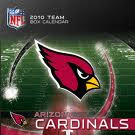Michael J. O'Neil, PhD
oneil@oneilresearch.com
The operative assumption of most observers of the Pearce recall election has been that Pearce is the odds-on favorite to retain his seat. He hails from a heavily Mormon, conservative, Republican district and has, after all, regularly won election handily.
Let's, however examine a few simple facts to see how tenuous these assumptions are. In the last election, Pearce received 17,552 votes. His Democratic challenger received 10,663 and an independent received 2808. That would seem, at first blush, to be a very healthy margin.
It is now clear that Jerry Lewis has emerged as the sole viable alternative to Pearce in the recall election. One scenario for a Lewis victory could look like this. Assume that Lewis picks up 2010 the Democratic and Independent vote. What percent of Pearce's vote would have to defect to Lewis for him to beat Pearce? If Lewis got just 12% of Pearce's vote, he would end up with 15,557 votes (10,663+2808+12% of 17,552) to Pearce's 15,446. Does anyone believe that a conservative, Mormon, Republican challenger with deep community ties could not convert 12% of Pearce's 2010 vote? Many of Pearce's 2010 voters were undoubtedly down-the-line Republican stalwarts who would never vote for any Democrat rather than ardent Pearce adherents. Certainly more than 12% of them are in this category.
These calculations are driven by the one important way that a recall election differs from a traditional election: there is no primary election. There is but a single vote without a runoff -- and the candidate with the most votes wins.
Of course, there are assumptions built in to this observation. First, it assumes that Democrats and Independents will actually come out and vote in the recall election in the same proportion that they did in 2010. But this is not all that far-fetched: 2010 was a dismal year for Democrats, mainly due to low rates of Democratic turnout. (The most underreported political story of the 2010 election is that the lion's share of the difference between the Republican landslide of 2010 and the Democratic landslide of 2008 was NOT in voters switching allegiances, but in differential turnout. Put simply, Democrats were energized in 2008 and Republicans were not. The reverse was true in 2010. And these differences account for the 2008 Democratic rout and the 2010 Republican one).
Two alternatives scenarios, however, would bolster Pearce's prospects. The above calculations assume that Lewis captures the entire 2010 Democratic and Independent vote. No one ever gets 100% of anything. So, in reality, Lewis would need a bit more than 12% of Pearce's 2010 vote to prevail. To the extent that he gets less than 100% of these votes, he simply has to convert proportionately more of Pearce's 2010 base.
More significantly, Pearce supporters have put a third candidate on the ballot. Olivia Cortes, whose sole purpose is to split the anti-Pearce vote. The candidate is a Hispanic woman who has been unavailable to the press Supporters have paid for and placed signs throughout the district, in Spanish. While she clearly has no chance of winning, whatever votes she does garner will pull votes only from Anti-Pearce Democrats and Independents, mostly Hispanic. Every anti-Pearce vote she pulls changes the 12% arithmetic.
The second Pearce scenario would occur if the recall electorate were to more closely resemble the 2010 PRIMARY rather than GENERAL ELECTION voters. Pearce got 10,636 votes in the primary. And two Democratic opponents only SPLIT 4,119 votes. If the November 2010 recall electorate resembles this group, Lewis will have a much more formidable task. Given the level of attention that this election is getting, however, it would seem to be likely to pull more voters than an uncontested Republican primary or a contested Democratic one in which the winner had virtually no chance of winning in November. And the bigger the turnout (especially among Democrats and Independents), the more Pearce is likely to lose.
(Note: the title "The 12% Solution" is homage to Matt Miller's "The 2% Solution", one of the best books I have read in years).
Michael O'Neil is President of O'Neil Associates (www.oneilresearch.com), a national public opinion research firm headquartered in Tempe. His firm has conducted over 1,700 research projects over the last 30 years. He has also been a keynote speaker and commentator and analyst of American and Arizona politics over the same period. Many of these observations are indexed at www.mikeoneil.org. He is also the founder of Citizens for a Sane Arizona.
To see an archive of past Huffington Post articles: click here.
Best Regards,
Mike O'Neil
Michael J. O'Neil, PhD
to reach me directly: http://oneil@oneilresearch.com
LINKS:
www.oneilresearch.com O'Neil Associates company website
www.mikeoneil.org numerous links to articles and videos
www.huffingtonpost.com/michael-j-o Huffington Post Articles
blog.oneilresearch.com political issues blog--contains this and other recent issues postings















No comments:
Post a Comment